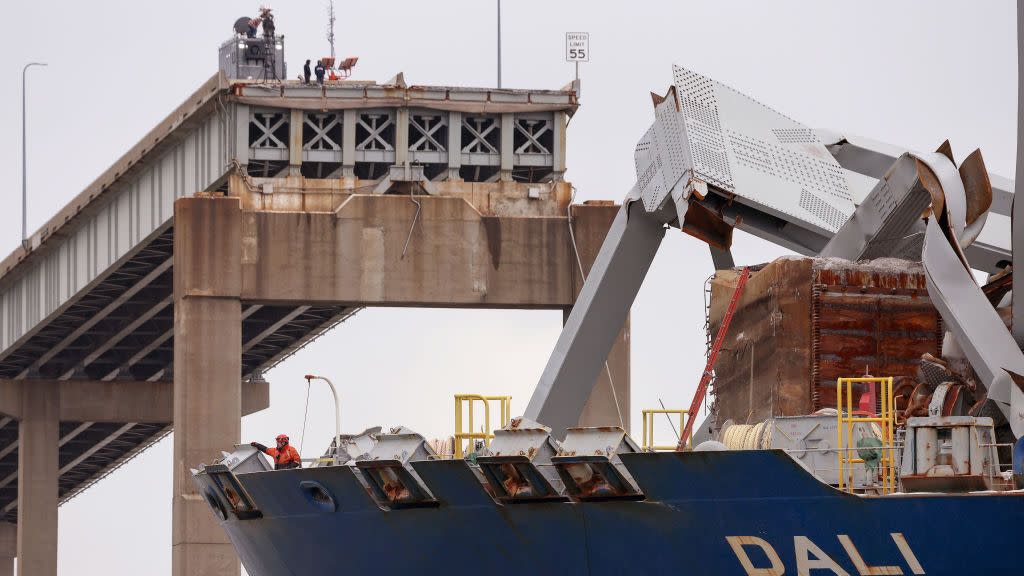21 Sailors Are Stuck Aboard the Ship That Hit Baltimore's Bridge—With No End in Sight

"Hearst Magazines and Yahoo may earn commission or revenue on some items through these links."
In the early morning hours of March 26, a 984-foot-long bridge collided with Baltimore’s Francis Scott Key Bridge, causing its collapse and the deaths of six construction works.
More that two weeks after the accident, the 21-person crew is still on board the ship, performing much-needed maintenance.
Because of the complexity of disembarking foreign nationals on container ships, the crew will likely continue to work and stay on the ship for some time.
Being stuck on a massive ship brings to mind the cruise ship-sized silence before the COVID-19 storm back in early 2020. But the 21-person crew of the Dali—the container ship that collided with the Baltimore’s Francis Scott Key Bridge in the early morning hours of March 26—is currently living that reality. For more than two weeks, they’ve remained onboard this ship with little-to-no visits to Maryland. So... what exactly are they doing there, and why haven’t they come ashore?
Days after the collision, media reported that the crew of the ship—consisting of 20 Indian nationals and one member from Sri Lanka—remained aboard the ship and were all safe. The Singapore company Synergy, which owns the vessel, only reported one minor injury to one crew member, who was treated at a local hospital and then returned to the ship. An additional update on April 2nd commented on the overall state of the crew.
“Ensuring the safety and wellbeing of the crew during this time is a critical priority for us. We have been actively engaged in a range of actions to support them since the incident,” the press release said, detailing various mental health services being offered to the crew. “The crew has unlimited use of the ship’s satellite communications, so they can stay in constant contact with their families. Food is delivered daily to assist the galley staff and to ensure that the vessel remains adequately provisioned.”
Even if the Dali wasn’t being restocked daily, they’d likely have more than enough resources to survive an extended stay on the boat. The New York Times reported soon after the initial collision that the Dali was only a mere 30 minutes into a 27-day voyage before the ship lost power and collided with the bridge, killing six construction workers who were on the bridge at the time.
So, while safe and provisioned, it might seem strange that the crew must remain on the ship as 50 salvage divers and some 12 cranes begin removing containers from the vessel. But unscheduled shore leave is a bit more complicated than you might think. According to the BBC, moving the Dali is second priority to clearing the shipping channel in Baltimore’s port, as 11 additional ships remain trapped (four of which are important to U.S. national defense).
Disembarking crews aboard these kinds of ships—even when not dealing with a major infrastructure collapse—is a bit of a headache, as they require valid visas and shore passes to get off the ship. Officials told the BBC back on April 1 that, until the investigation is complete, “the crew will remain on board.”
NPR, who spoke with the executive director of the Baltimore International Seafarers' Center, reports that unless the ship is considered “exceedingly unsafe,” the crew will continue performing upkeep until it is allowed to travel to its intended destination or is otherwise moved from its current location for repairs.
When that will be is anyone’s guess.
You Might Also Like

